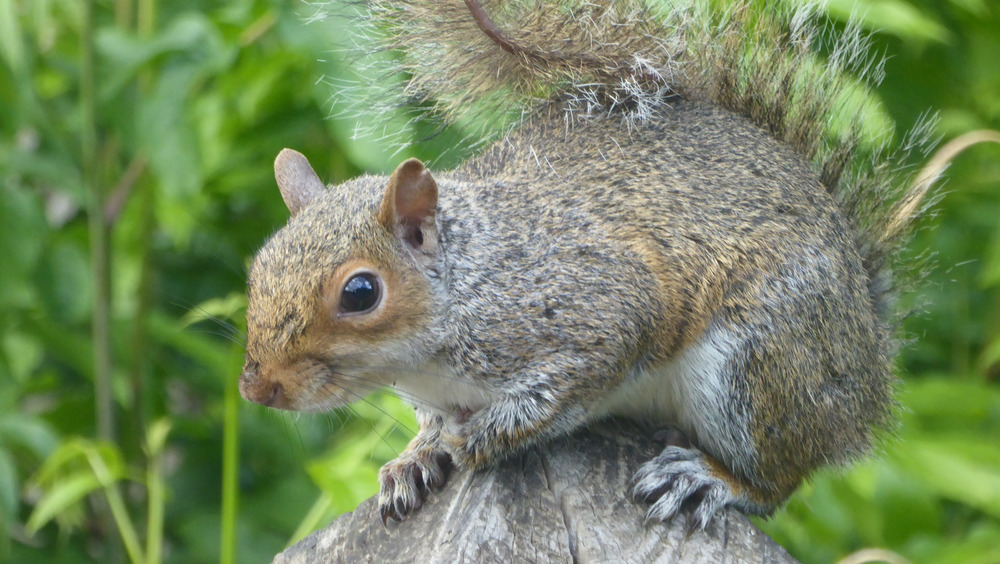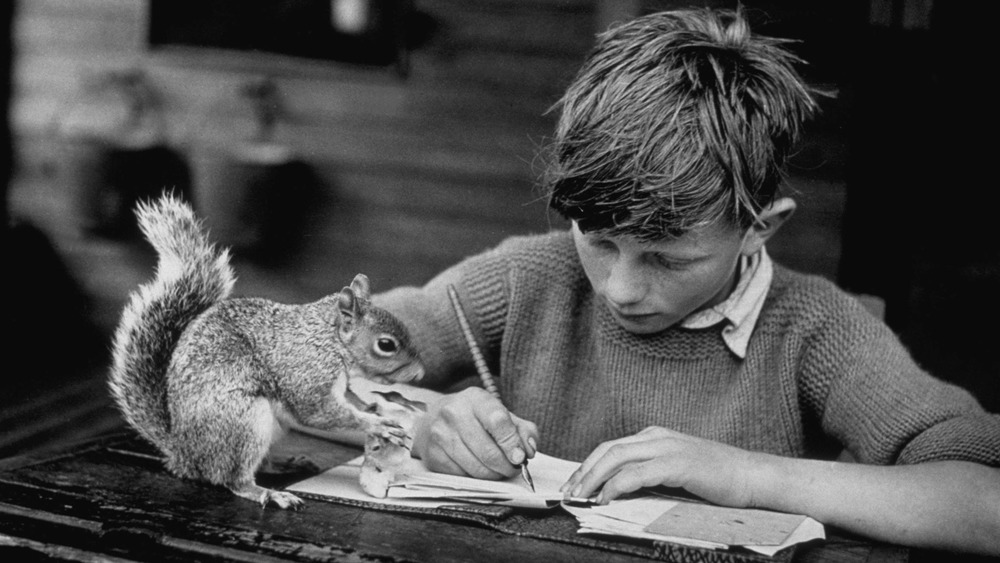The Strange Animal That Used To Be Kept As A Pet
Whether we're aware of it or not, most of us have a tendency to classify animals along a spectrum from "pet" to "wildlife." Dogs and cats? Definitely pets. Alligators and mountain lions? Definitely wildlife. Fish, birds, and lizards? Those can fall somewhere in between. What about squirrels? Modern opinions of squirrels range quite a bit; some might describe them as cute little creatures, while others may consider them annoying pests. Either way, most of us would agree that squirrels have no place in the home.
That's today. But there was a time, according to Atlas Obscura, when squirrels were a highly popular pet, especially in the 18th and 19th centuries among upper-class Americans. Per Atlas Obscura, colonial-era Americans kept a variety of "wild" animals as pets, but squirrels were the most popular, as they were among the easiest to care for. In fact, owning a squirrel was something of a status symbol in the 1700s. Wealthy parents would often buy squirrels for their children. There are numerous 18th-century portraits of upper-class kids posing with their pet squirrels. For pets, the American grey squirrel was the most popular type, but flying squirrels and red squirrels were also kept in the home.
Perhaps the most celebrated 18th-century squirrel was named Mungo. According to The Washington Post, Mungo was a gift from Benjamin Franklin to his friends, the Shipleys, living in England. Mungo escaped confinement one day, but his freedom was quickly cut short; the squirrel was killed by a local dog.
Squirrels were a popular pet in the 18th and 19th centuries
According to the National Archives, Franklin wrote a eulogy for Mungo the squirrel, which included a 22-line poem. "Few Squirrels were better accomplish'd; for he had had a good Education, had travell'd far, and seen much of the World," Franklin wrote.
In the 19th century, Atlas Obscura reports, squirrel ownership became even more common. Most American pet stores had begun to sell squirrels, though some families chose to acquire pet squirrels from the wild instead. By the mid-1800s, manuals describing how to care for squirrels sprung up alongside other pet-care literature. One author wrote that squirrels could be trained to jump from one hand to the other. She also warned that the furry creatures have a tendency to hoard nuts and sugar cubes in hidden crevices of family rooms, and argued that it might be best to keep them in tin cages with running wheels instead. Another author suggested that pet squirrels should be obtained "directly from the nest, when possible."
But by the 20th century, America's love for squirrels was dying out. Throughout the 1900s, many states passed "wildlife conservation" and "exotic pet" laws which banned the ownership of squirrels. In the 1910s, California led a "Kill the Squirrels" campaign, painting the once-beloved creatures as troublesome pests. Modern pet experts agree that squirrels are terrible pets overall: their claws and teeth are too sharp, they have special dietary needs, and they're generally too energetic to train.

